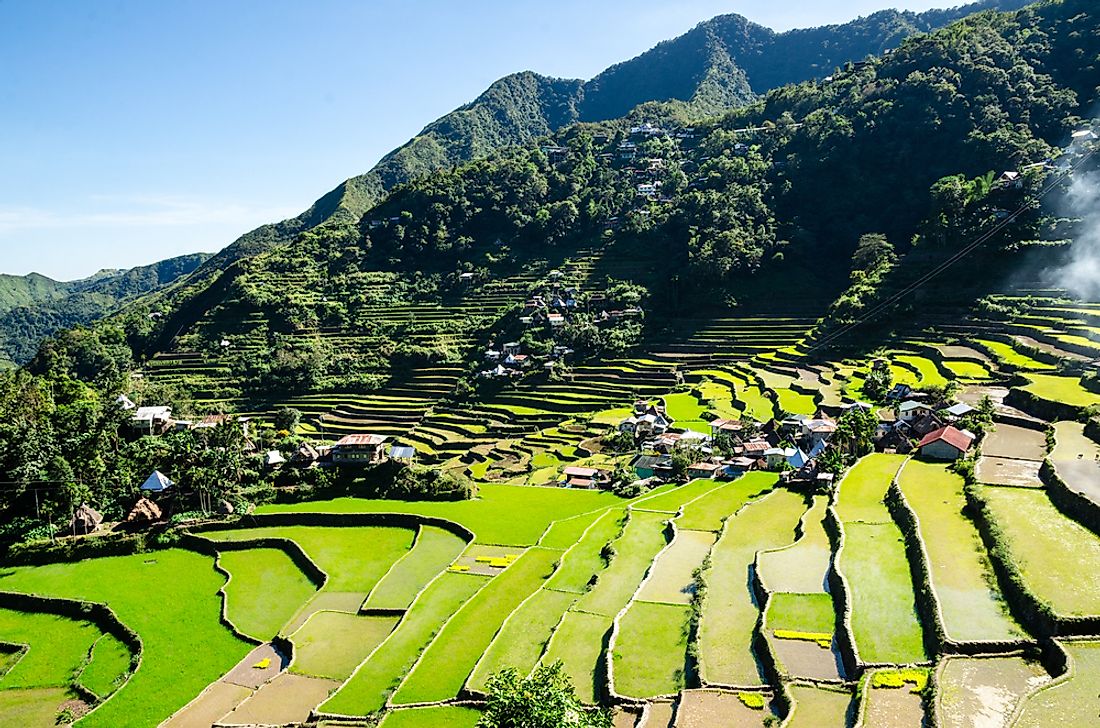Banaue Rice Terraces - The Eighth Wonder of the World

5. Description
Banaue Rice Terraces are the world’s oldest rice terraces. The 2,000 years old terraces were carved by indigenous Filipino’s ancestors. The terraces are 1,500 meters above sea level and have an ancient but efficient irrigation system. The crops which are planted on the terraces include rice and vegetables. Most the rice grown on the Banaue rice terraces are exported. However, the yield has significantly reduced and as such the economic activity is shifting from rice exports to tourism.
4. Uniqueness
The Banaue rice terraces are hand-hewn and exhibit spectacular ancient engineering feats. They have been in existence for about 2,000 years without losing their importance to the Ifugao people and the Philippines as a nation. In fact, the holy days and festivals of the Ifugao people are planned around the cultivation and harvesting of the rice planted on the terraces. The terraces and the Ifugao people have a symbiotic relationship and one cannot do without the other.
3. Habitat
The Banaue rice terraces are located on the mountains found in the province of Ifugao in the Philippines. They cover 10,360 square kilometers of the mountainous side of the region. There are also rainforests above the terraces which are the source of water used to set up the irrigation channels. Waters flowing through streams and springs are trapped and used for the irrigating the Banaue terraces. The Banaue area has a cool and wet climate.
2. Tourism
The Banaue rice terraces are recognized as the “Eighth Wonder of the World.” It is said that if all the terraces were built end to end, they would be able to cover half of the world. The site receives both local and foreign tourists yearly. The terraces have hiking trails which guides use to take visitors around the terraces. Tourists engage in sight seeing activities including visits to the Tappiyah falls. They also enjoy swimming in a natural pool called Gihob. The best time to visit the Banaue terraces is during the planting season. It used to take visitors 10 hours to reach Banaue from Manila, which is the capital city of Philippines. However, from May, a flight to Clark International Airport was launched. Now it only takes one hour from the airport to the Banaue terraces.
1. Threats
The Banaue rice terraces were in the Danger List until 2012 when it was removed. This was because the terraces were greatly endangered at the time. However, in 2012 there was hope that the rice terraces were being revived. One of the major threats to the survival of the Banaue rice terraces is the negative effect of erosion on the terraces. The other threat is abandonment of the terraces by young locals in a quest to seek better opportunities in the urban areas. This rural-urban migration results to less people being available to tend to the terraces. A third threat is natural disasters such as the 1990 earthquake and ElNino. Due to these concerns, the locals no longer manage the terraces like they used to. Instead, the terraces are managed by the National Commission for Culture and the Arts, and the Provincial Government of Ifugao. The aim of the Philippine government is to conserve and protect the Banaue rice terraces.







